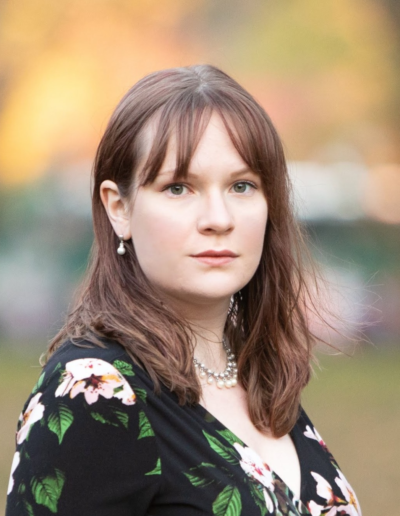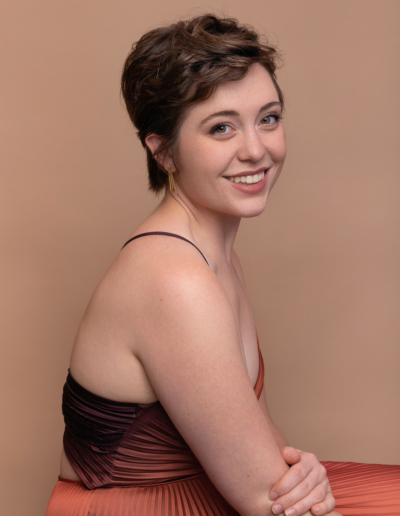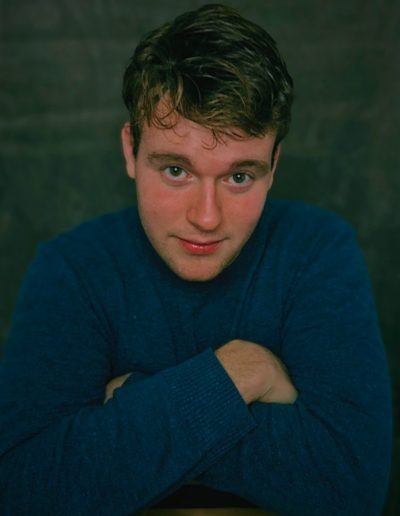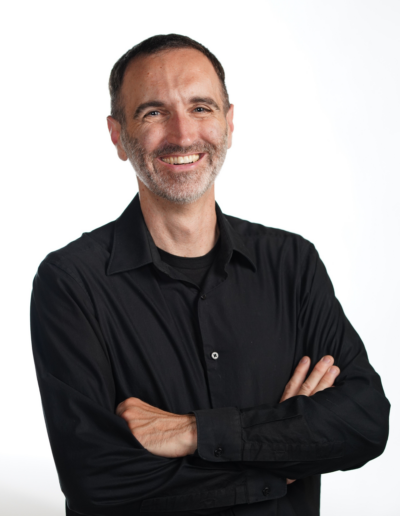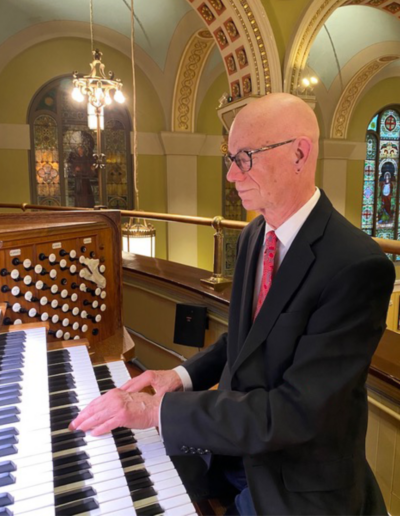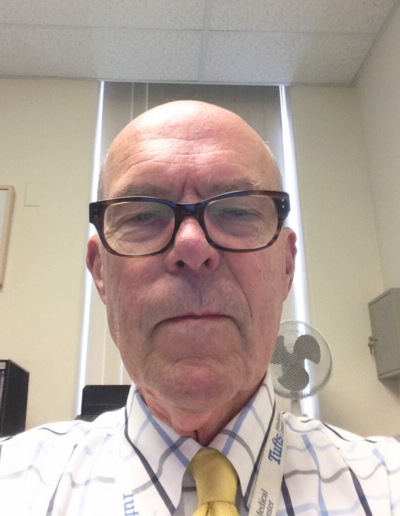Liturgical Music
At Saint Cecilia, we’re passionate about music.
Dedicated to the patroness of sacred music and neighbor to two world-renowned colleges of music, we are committed to the choral support of the Church at prayer. Under the direction of our Director of Music, Rob Duff, our three parish choirs perform from a rich heritage of sacred music spanning fifteen centuries.
Liturgical Music
In Catholic worship, music is an integral part of the liturgical experience. Saint Cecilia has three liturgical choirs comprised of over 50+ singers and instrumentalists. Choral music from around the globe is incorporated into our weekly liturgies and often features young soloists from local colleges.
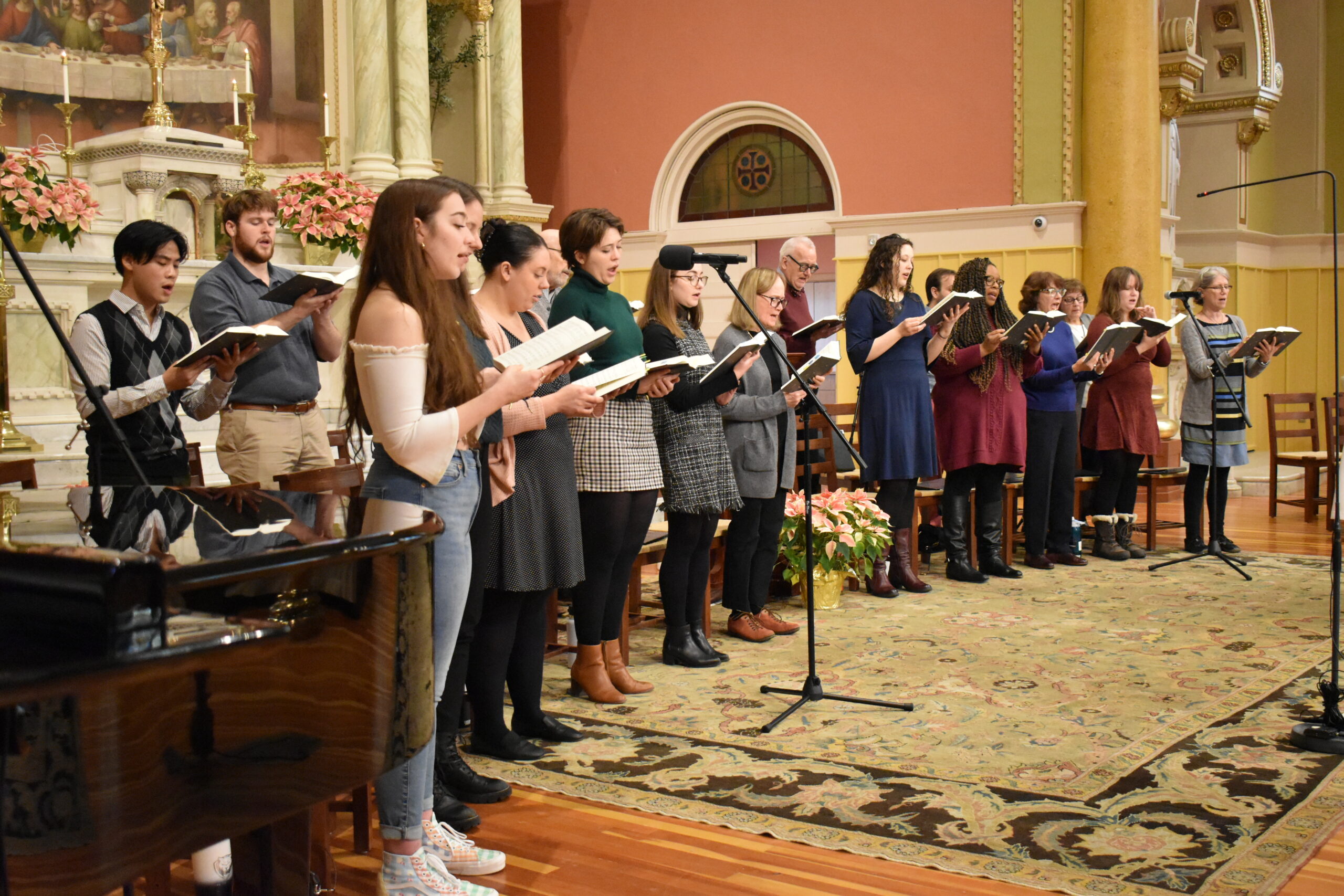 Liturgical Choirs
Liturgical Choirs
It lifts the senses and invites us to actively participate in the praise and worship of God, not only through singing but also through listening. Sacred music has the capacity to express both joy and lamentation; it asks for mercy and forgiveness; and it offers thanks and praise to the Creator. When we assemble as a community at the Sunday celebration, music is not merely conducive to prayer, but rather it is prayer.
Under the direction of Dr. Robert Duff, our three parish choirs perform from a rich treasury of sacred music spanning fifteen centuries. On any given Sunday you will hear music that reflects the diversity of our tradition—from Gregorian chant and sacred polyphony to choral music of the twenty-first century.
Saint Cecilia’s choirs include over 50 singers, comprised of both volunteer and staff singers. Rehearsals are held weekly. For information on joining one of the Sunday morning choirs, please contact Robert Duff, Director of Music at rduff@stceciliaboston.org.
Our Musicians
In addition to our Director of Music, Robert Duff, Saint Cecilia is privileged to have four talented and skilled musicians who regularly enhance the music at our liturgies.
Our Organists
Saint Cecilia is delighted to employ three talented organists who infuse our sacred space with a profound sense of awe and spiritual connection through their passionate and skillful performance.
Learn More About Our Pipe Organs
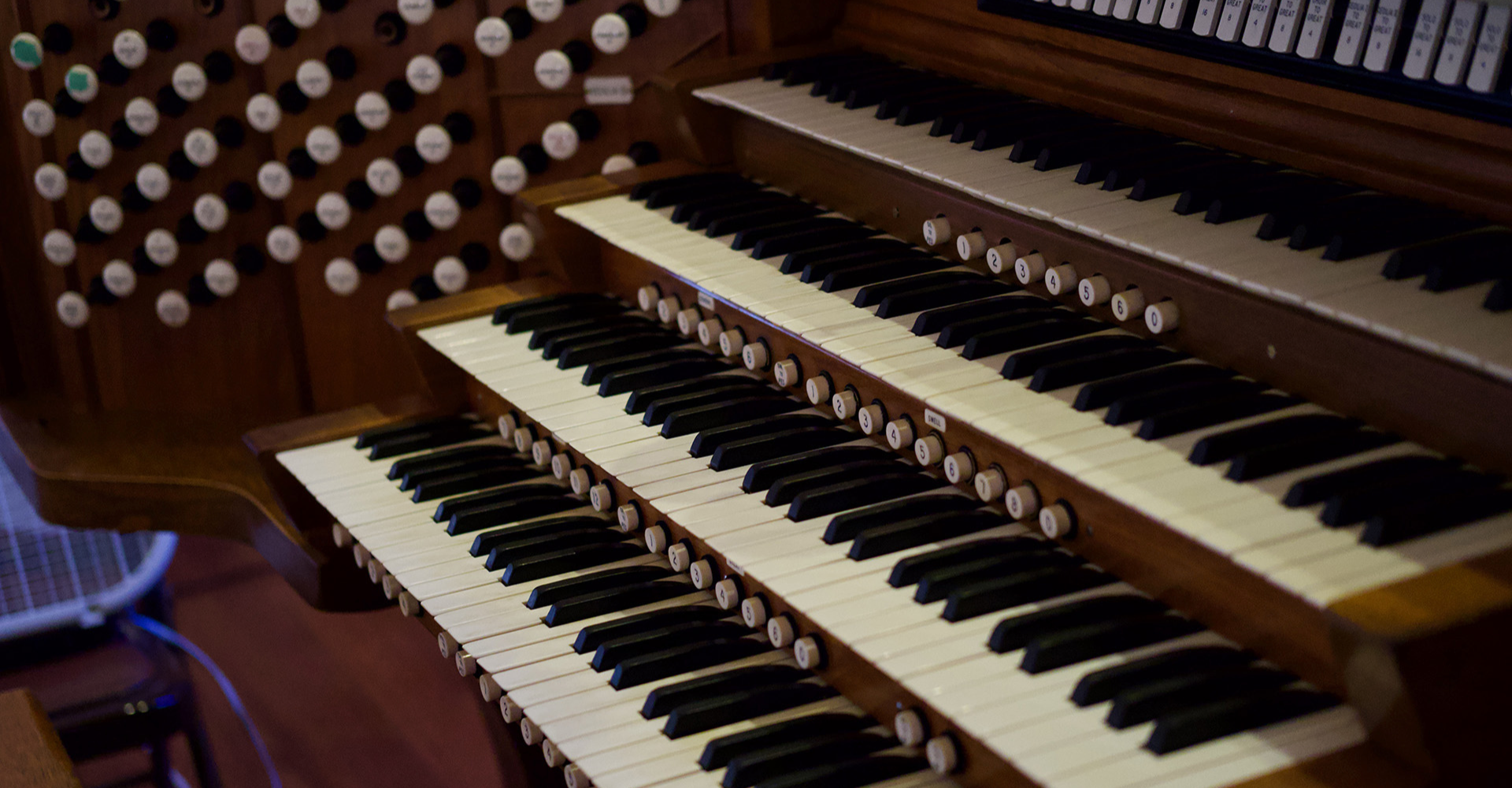
Organ History
Saint Cecilia Parish was established in 1888. In 1902 the Hutchings-Votey Organ Company of Boston installed a three-manual organ in Saint Cecilia Church, opus 1465. The instrument of twenty-four speaking stops had electric action and stood in the very center of the rear gallery in one case. The organ builders were George S. Hutchings (1835-1913), who started a business in 1869, and Edwin Scott Votey (1856-1931), a pioneer in the perfection of the player piano, who was Hutchings’ partner from 1901 to 1907. In 1902, the factory was on 23-37 Irvington Street in Boston (and in 1905-1908 at Albany Street in Cambridge near Massachusetts Avenue, before moving to Waltham, MA.)
Saint Cecilia Church was first renovated in 1954. Part of the project included installation of the Assumption window in the rear gallery, right behind the Hutchings organ. In order to accommodate the window, and to overcome growing mechanical difficulties with the organ, Rostron Kershaw of Lowell was hired to construct a new three manual organ. Roy Carlson of Magnolia, Massachusetts developed the tonal design for the new thirty-two stop instrument. About half of the organ’s pipework was recycled from the Hutchings but redistributed to conform to the new scheme. By 1995 the Kershaw organ’s mechanical reliability was in question. The Kershaw installation left various components inaccessible for maintenance. Also, the tonal design had proved to limit the organist’s flexibility in playing a smooth service or in faithfully rendering various styles of organ literature. In addition, the organ’s pitch was A=427, not the standard A=440 set in the 1920s for orchestral instruments.
Work began in January of 1998. All pipes were removed, cleaned, cut to pitch, and put back on speech. Most of the organ’s 2,300 pipes were found to be unmusical in tone. Theodore Gilbert, an organ builder from Wilbraham, Massachusetts with fifty years of organ building experience as a voicer and finisher for the Austin, Casavant, and Aeolian-Skinner Organ Companies, gave a heart and soul to the new organ. He was brought into the project to reconstruct and re-scale these pipes. This painstaking process was done with the unified whole in mind, to produce a new organ of variety, color, and expressive quality. A. R. Schopp’s Sons of Alliance, Ohio, restored the reed stops, completing sets that had been changed by Carlson in 1954. The Kershaw console was replaced with a four-manual Austin console from Cleveland, Ohio, solidly reliable and complete with ivory keys. Every effort was made to improve the organ’s layout for maximum tonal effects and ease of maintenance.
Allan Taylor of Feeding Hills, Massachusetts, completely rewired the entire organ, designing a new solid-state switching relay to control the organ’s electrical connections. New DC servo motors were installed for the expression shades. Andrew Smith of Cornish, NH rebuilt off-set windchests and created racking for the restored reed stops. Jonathan Moretz of Boston Building Doctors supervised the reconstruction of the expression chambers and the new decking above each chamber to Timothy E. Smith’s specifications. Southfield Organ Builders of Springfield, Massachusetts, constructed a new unit windchest. The site work, requiring hundreds of hours of cleaning, rebuilding, relocating, and on-site fabricating, was completed by a team including Gabriel Cantor, Gregory Dixon, Christian Grove, Gregory Hyde, Peter Hyde, Benjamin Little, Adam Mittleman, Nathan Schreiber, Gregory Serapiglia, Helen and Carlyle Smith, David Steakley, and Eric Weisman. Most are residents of Framingham, Massachusetts, and a neighborhood in that town is call Nobscot. Without their effort, the project could not have succeeded.
On Sunday, November 21, 1999 the gallery organ was blessed during the parish liturgy by Msgr. Michael F. Groden, Pastor of Saint Cecilia Parish. It was dedicated in concert by organist Richard J. Clark on November 22, 1999, the Feast of Saint Cecilia.
Soon to follow was the installation of an antiphonal division of seven ranks, located near the front of the church, beneath the Saint Cecilia Window. Built in the 1960s by Robert Noehren, it was removed from St. Ignatius Episcopal Church in Antioch, Illinois. Reconstruction began in July 2000 by Adam Mittleman and Timothy Smith. Its inaugural liturgy was on the Feast of the Assumption, August 15, 2000. Soon after, Smith and Gilbert began reshaping its tonal design to tailor the organ to Saint Cecilia Parish’s very specific liturgical needs. Furthermore, part of this retailoring included extensive wiring by Allen Taylor making the organ playable from both its own two-manual consoles, and from the four-manual consoles in the gallery. An 1850 W. B. D. Simmons case was refurbished by Andrew Smith of Cornish, New Hampshire and was installed in October of 2001. The completed Antiphonal Organ was dedicated in concert by organists Timothy E. Smith and Richard J. Clark on November 18, 2001.
In 2012 the four-manual Austin console was replaced by the Aeolian-Skinner console from the Cathedral of St. Philip in Atlanta, Georgia. Modified to the specifications of the Saint Cecilia Organs, it features 64 levels of memory making it a far more versatile instrument than ever before in its history.
The most recent additions to the organ include two significant ranks: a 32’ Contra Bourdon and a 32’ Contra Bombarde bringing this formidable instrument to fifty-two ranks and 2,950 pipes.
In June of 2014, the Saint Cecilia pipe organs were featured for several events at the National Convention of the American Guild of Organists.
The Great Organ
The Great Organ Stop List
Smith & Gilbert • Nobscot 1999
Saint Cecilia R. C. Church, Boston
IV/54 • 3,084 pipes
(w=wood pipes; m=metal pipes *preparation)
Great: 61 notes
Bourdon 16’ 12 w
Open Diapason 8’ 61 m
Melodia 8’ 53 w
Bourdon 8’ 61 w&m
Violone 8′ 61 m (solo)
Octave 4’ 61 m
Bourdon 4’ 12 m
Twelfth 2 2/3’ 61 m
Fifteenth 2’ 61 m
Mixture IV 1 1/3’ 244 m
Trumpet 16′ 12 m
Trumpet 8’ 61 m
Clarion 4’ 12 m
Zimbelstern
Swell: 61 notes, enclosed
Spitzflute 16’ 12 m
Geigen 8’ 61 m
Gedackt 8’ 61 w&m
Gamba 8’ 61 m
Gamba Celeste 8’ 61 m
Spitzflute 8’ 61 m
Principal 4’ 61 m
Flute Traverse 4’ 61 w&m
Flageolet 2’ 61 m
Plein Jeu III 2’ 183 m
Bassoon 16’ 61 m
Cornopean 8’ 61 m
Oboe 8’ 61 m
Clarion 4’ (61 m)
Vox Humana 8’ 61 m
Tremolo
Solo: 61 notes
Violone 16′ 61 m
Bourdon 8’ (Great)
Spitzflute 8’ (Swell)
Viola 8’ (Choir)
Tuba 8’ 61m (11 in.)
Antiphonal: 61 notes
Principal 8’ 61 m
Bourdon 8’ 61 w & m
Gemshorn 8’ 61m
Vox Angelica II 8’ 108 m
Rohrflute 8’ 61 m
Choir: 61 notes, enclosed
Viola 8’ 61 m
Chimney Flute 8’ 61 w&m
Dulciana 8’ 61 m
Unda Maris 8’ 55 m
Viola 4’ 12m
Flute 4’ 61 m
Nasard 2 2/3’ 61 m
Harmonic Piccolo 2’ 61 m
Tierce 1 3/5’ 61 m
Mixture III 1’ *(147 m)
Trumpet 8’ (Great)
Clarinet 8’ 61 m
Schalmey 8’ 61 m
Tremolo
Pedal: 32 notes
Contra Bourdon 32’ 12 w
Open Wood 16’ 32 w
Subbass 16’ 32 w
Bourdon 16’ Great
Spitzflute 16’ Swell
Principal 8’ 32 m
Flute 8’ 12 w
Spitzflute 8’ Swell
Violone 8′ (Solo)
Octave 4’ 12 m
Flute 4’ 12 w
Cornet IV 32’ 64 m
Bombarde 32’ 12 m
Trombone 16’ 32 w
Bassoon 16’ (Swell)
Trumpet 8’ (Great)
Clarion 4’ (Great)
Untersatz (Antiphonal) 16’ 24 m
Gallery Console: 4 Manuals
64 levels/ 12 general pistons
8 divisional manual pistons
6 divisional pedal pistons
divisional cancels
manual to pedal reversibles
balanced Swell, Choir & Antiphonal pedals
Crescendo pedal / Full organ reversible
Full inter- and intra – manual couplers
(separate Antiphonal Console: 2 Manuals)
Antiphonal Console: 2 Manuals
The Antiphonal Organ
The Antiphonal Organ of seven ranks was installed in 2001. It is located near the front of the church, underneath the Saint Cecilia window. The instrument has been revoiced by Theodore Gilbert and retailored by Timothy E. Smith to meet St. Cecilia Parish’s liturgical needs. Extensive wiring by Allen Taylor makes the organ both playable from its own 2 manual console, and from the 4 manual console in the gallery. The case was built in 1850 by W. B. D. Simmons and was refurbished by Andrew Smith.
Smith & Gilbert | Nobscot 2001
The Antiphonal Organ as played from its own console:
(w=wood pipes; m=metal pipes *preparation)
Manual I
Principal 8′ 61 m
Bourdon 8′ 58 w&m
Gemshorn 8′ 49 m
Vox Angelica 8′ 108 m
Octave 4′ 12 m (ext)
Rohrflute 4′ 61 m
Fifteenth 2′ 12 m (ext)
Manual II
Rohrflute 8′
Gemshorn 8′
Vox Angelica II 8′
Gemshorn 4′ 12 m (ext)
Bourdon 4′
Fifteenth 2′
Pedal:
Untersatz 16′ (24 capped metal)
Principal 8′
Bourdon 8′
Octave 4′
Flute 4′
Mass Schedule
Saturday
5:00 p.m. – In-person
Sunday
8:00 a.m. – In-person
9:30 a.m. – In-person & Livestream
11:30 a.m. – In-person
6:00 p.m. – In-person
Wednesday, Thursday, Friday
8:00 a.m. – In-person
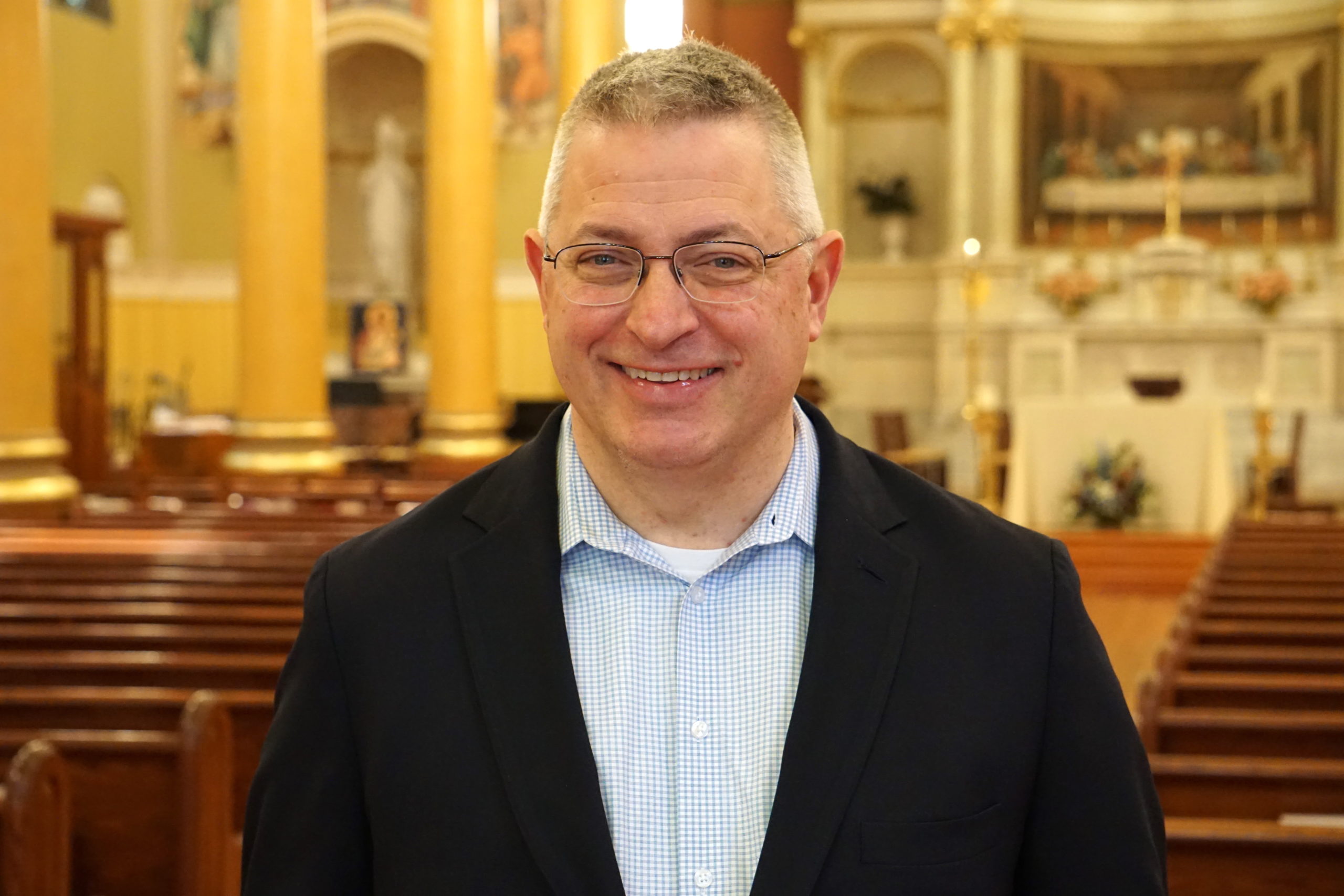
Robert Duff
Director of Music
Parish Accessibility
The church building is fully accessible by elevator at both the street level entrance on Belvidere Street (at the front of the building), and at the entrance on the corner of St. Cecilia Street and Scotia Street (the left side of the building).

